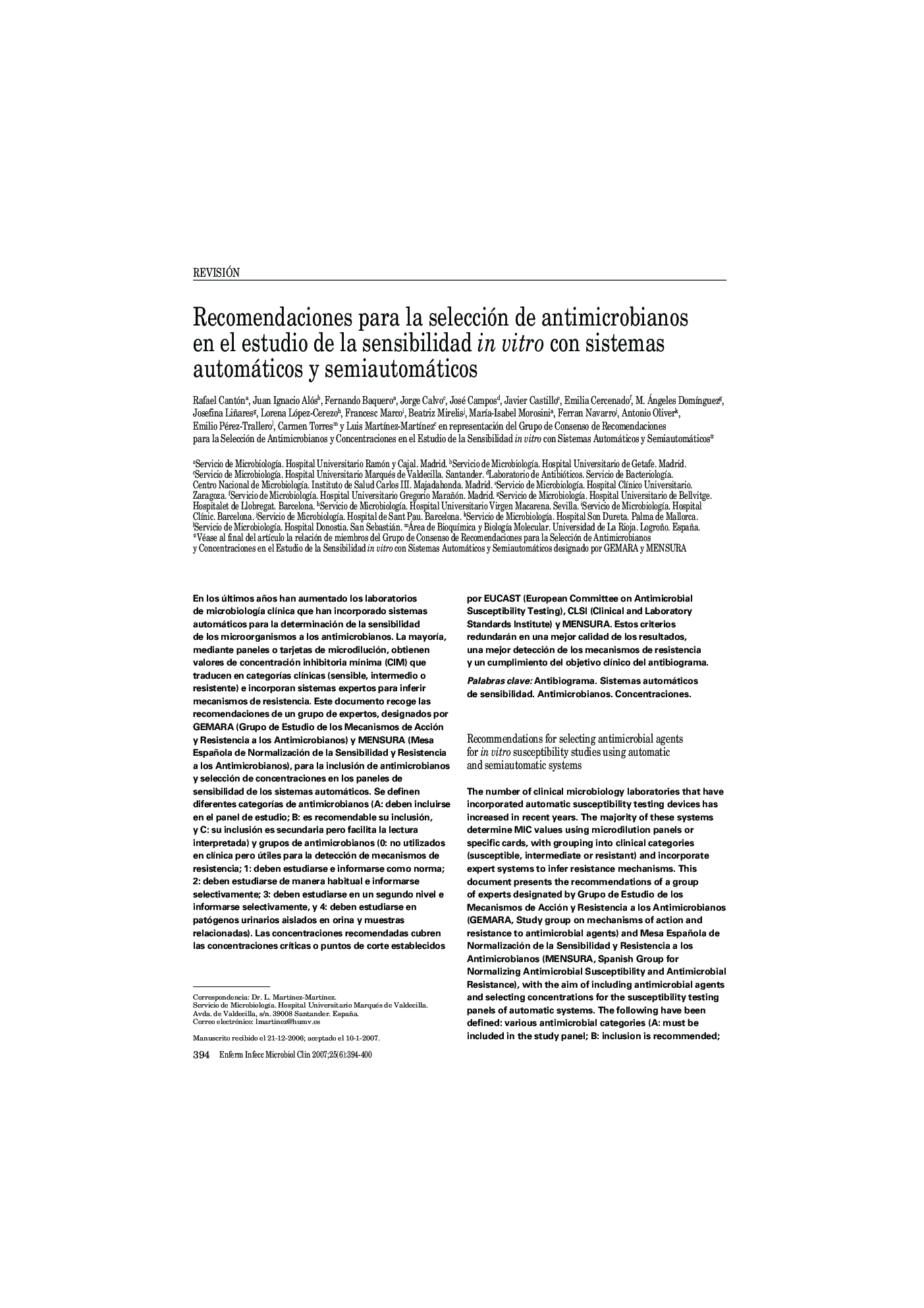| Article ID | Journal | Published Year | Pages | File Type |
|---|---|---|---|---|
| 3402983 | Enfermedades Infecciosas y Microbiología Clínica | 2007 | 7 Pages |
Abstract
The number of clinical microbiology laboratories that have incorporated automatic susceptibility testing devices has increased in recent years. The majority of these systems determine MIC values using microdilution panels or specific cards, with grouping into clinical categories (susceptible, intermediate or resistant) and incorporate expert systems to infer resistance mechanisms. This document presents the recommendations of a group of experts designated by Grupo de Estudio de los Mecanismos de Acción y Resistencia a los Antimicrobianos (GEMARA, Study group on mechanisms of action and resistance to antimicrobial agents) and Mesa Española de Normalización de la Sensibilidad y Resistencia a los Antimicrobianos (MENSURA, Spanish Group for Normalizing Antimicrobial Susceptibility and Antimicrobial Resistance), with the aim of including antimicrobial agents and selecting concentrations for the susceptibility testing panels of automatic systems. The following have been defined: various antimicrobial categories (A: must be included in the study panel; B: inclusion is recommended; and C: inclusion is secondary, but may facilitate interpretative reading of the antibiogram) and groups (0: not used in therapeutics but may facilitate the detection of resistance mechanisms; 1: must be studied and always reported; 2: must be studied and selectively reported; 3: must be studied and reported at a second level; and 4: should be studied in urinary tract pathogens isolated in urine and other specimens). Recommended antimicrobial concentrations are adapted from the breakpoints established by EUCAST, CLSI and MENSURA. This approach will lead to more accurate susceptibility testing results with better detection of resistance mechanisms, and allowing to reach the clinical goal of the antibiogram.
Related Topics
Life Sciences
Immunology and Microbiology
Microbiology
Authors
Rafael Cantón, Juan Ignacio Alós, Fernando Baquero, Jorge Calvo, José Campos, Javier Castillo, Emilia Cercenado, M. Ángeles DomÃnguez, Josefina Liñares, Lorena López-Cerezo, Francesc Marco, Beatriz Mirelis, MarÃa-Isabel Morosini, Ferran Navarro,
